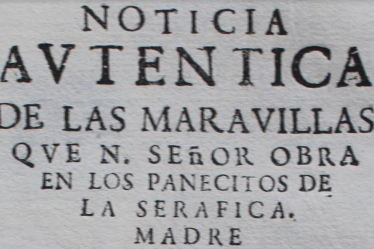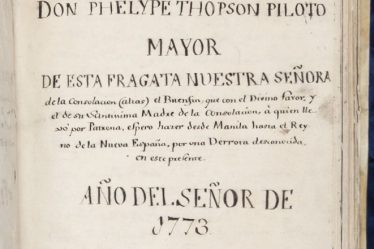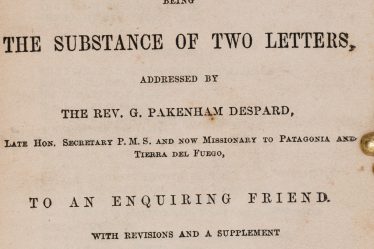One of the most important Dutch collection of voyages to Africa, Asia and America, compiled by Isaac Commelin, the general title is Begin ende Voortgangh, van de Vereenighde Nederlantsche Geoctroyeerde Oost-Indische Compagnie printed in 1646 in Amsterdam, it boasts a total of 230 engraved plates and maps (some folding).
It is a rare compendium presenting 21 first-hand accounts of the Dutch East India Company’s voyages of exploration and trade to the Far East, many selections previously unpublished or appearing here for the first time in Dutch, lavishly illustrated with 230 engraved maps, views, and botanical, zoological and ethnographic depictions documenting the formative journeys of the Republic’s “Golden Century.” “At the height of its power and influence […] the VOC – acronym for the United Netherlands East India Company – was the greatest commercial concern in the world” (J. Landwehr, p. xi). With some 20,000 employees, it was the world’s first multinational corporation and the first corporation to issue stock. The East India Company’s appetite for spices, textiles, metals, coffee, tea, tobacco, etc., spurred missions of discovery from the Cape of Good Hope to Japan, and its reorganization of military and mercantile power in Asia forever altered relations in that region. In 1644-46 Isaac Commelin and his publisher, Jan Janssonius, issued the two-volume Origin and Progress of the United Netherlands Chartered East-India Company (Begin ende Voortgangh) as a continuation of the venerable tradition of edited voyages of discovery made popular by such writers as Theodor de Bry (from 1590), Levinus Hulsius (from 1598), and Samuel Purchas (1625). Commelin’s work charts the VOC’s precursors of the 1590s, the circumstances of its chartering in 1602, and its displacement of Iberian hegemony in the East Indies during the first half of the century; the VOC would go on to enjoy another century of unparalleled success after the publication of this work.
The work contains 21 separate accounts, each with its own pagination, and many with their own suite of pictorial engravings and engraved maps. Considered “the corner-stone of any important […] collection which specialises in Dutch voyages and travels” (Boxer, p. 4), the Begin ende Voortgangh offers several iconic texts from the Age of Discovery. Among these are: Gerrit de Veer’s diary of the 1595-96 arctic expeditions of Willem Barentsz; Cornelis de Houtman’s 1594-94 journey around the Cape of Good Hope, the first Dutch incursion into the East Indies spice trade; Olivier van Noort’s circumnavigation via the Strait of Magellan, with much information on Brazil and Chile (1598-1601); Willem Cornelisz. Schouten and Jacob Le Maire’s circumnavigation via the strait north of Tierra del Fuego (Le Maire’s Strait), later making first contact with Tonga (1615-1617); Joris van Spilbergen’s voyage around the world (1614-1618), with details about Acapulco and Manila; and Jacques L’Hermite’s 1623-1626 mission to hunt Spanish silver ships leaving Peru and to establish a colony in Chile or Peru (he failed; scurvy, dysentery).
Never before published logs, journals, ledgers and recollections penned by the explorers themselves account for about half of the work’s more than 2000 pages. Boxer suggests that Commelin may have “clandestinely” procured this mass of semi-official material from an ex-employee of the East India Company, or that Janssonius, a leading Amsterdam publisher specializing in navigational and cartographic material, may have tapped one of his sources among the Directors of the Company (pp. 3, 5). Some of the newly procured documents include: an account of Paulus van Caerden’s failed attempt in 1599-1601 to establish trade at Aceh in northern Sumatra; a description (1599-1601) by Jan Sas of Steven van der Hagen’s stop at Madagascar, of bargaining for pepper in Bantam, and of the building of the first Dutch fort in the East Indies, at Amboina; the 1605-08 journal of Paulus van Solt detailing his trade on the Coromandel coast and describing the Dutch eclipse of the Portuguese in mercantile matters in that region; Cornelis Matelief de Jonge’s extensive journal (1605-08) recounting his battles with the Portuguese at Malacca and his early encounter on Mauritius with the now extinct dodo bird; Pieter Willemszoon Verhoeff’s 1607-10 mission to expel Iberian traders from the East Indies; a miscellany including details of Japan journeys in 1607-11, a 1609 description of Borneo, and lists of garrisons, fortresses and ships in the East Indies in 1616; Johan van Twist’s 1638 description of India, especially Gujarat; and early discussions of Japan by (1620s and 1630s) Hendrick Hagenaer and François Caron.
In addition to this wholly new material, Commelin included several original selections in Dutch, previously published only in the Latin or German translations of de Bry and Hulsius, thereby remedying the misprints and mistranslations that had plagued those derivative versions and integrating these important narratives into a larger project celebrating Dutch achievement in its own language. It should be recalled that the seventeenth century saw the Dutch come to dominate global printing as much as global trade, and so Commelin’s restoration of key mercantile documents to their original language may be seen as doubly emblematic of Dutch ascendancy. Whether providing new texts, restoring old ones, or reprinting the best available material, Commelin demonstrates a steady editorial hand, conscientiously marking where he inserts an excursus and always noting his source.
The wording of the title page and the inclusion of some purely navigational and commercial selections suggest that the Begin ende Voortgangh had some pretensions as on-board reading for the mariner and merchant. While this may be true, the work certainly offered a wealth of pictorial detail for the Dutch enthusiasts who preferred their armchairs to the high seas. The copious engravings are of great ethnographic, botanical, and zoological interest, while the extensive suite of maps records the current knowledge of geography from South America, to Africa, to the East Indies.
The present copy is the scarce 1646 second edition. C. R. Boxer describes a shadowy 1644 “dummy run” of some sort, certainly an issue not intended for general circulation (1 copy is known). The 1645 first edition is itself very rare. The present 1646 edition is essentially a reprint of the 1645, with the date altered on the first title page and a few minor corrections to the text. As Landwehr suggests, very few copies retain the full complement of 230 plates and maps, as here; and copies in fine condition are rare.
Appendix of voyages in the Begin ende Voortgangh
- Gerrit de Veer, voyages to the north (1594-1596)
- Cornelis de Houtman, first Dutch voyage to the East Indies (1595-1597)
- Jacob Cornelisz. van Neck and Wybrant van Warwijck, first voyage to the East Indies (1598-1600), with a Javanese-Malay dictionary
- Sebald de Weert, voyage around the world (1598-1599), as described by Barent Jansz. (Potgieter)
- Olivier van Noort, voyage around the world (1598-1601)
- Pieter Both and Paulus van Caerden, voyage to the East Indies (1599-1601)
- Jacob Cornelis van Neck, second voyage to the East Indies (1600-1604)
- Voyages to the East Indies under Steven van der Haghen (1599-1601), Cornelis Pietersz. and Guillaume Senechal (1600-1602), and Jacob van Heemskerk (1601-1603)
- Wolfert Harmensz, voyage to the East Indies (1601-1603)
- Joris van Spilbergen, voyage to the East Indies (1601-1604)
- Wijbrand van Warwijck and Sebald de Weert, voyage to the East Indies (1602-1604)
- Steven van der Haghen, second voyage to the East Indies (1603-1606)
- Cornelis Matelief, voyage to the East Indies (1605-1608)
- Paulus van Caerden, voyage to the East Indies (1606-1609)
- Pieter Willemsz. Verhoeff, voyage to the East Indies (1607-1616)
- Pieter van den Broecke, voyages to West Africa and Asia (1605-1630)
- Johan van Twist, description of Gujerat (1638)
- Joris van Spilbergen, voyage around the world (1614-1618); Willem Cornelisz. Schouten and Jacob Le Maire, voyage around the world (1615-1617)
- Jacques L’Hermite, voyage around the world (Nassau fleet) (1623-1626); with appendix by Pedro de Madriga, description of Peru and Chile
- Wijbrant Schram, voyage and battle with Claes Compaen (1626); Zeyger van Rechteren, voyage to the East Indies (1628-1632); appendix of sea battle of Cornelisz. off Goa (1639)
- Hendrick Hagenaer, voyage to the East Indies (1631-1637), François Caron, description of Japan (1636), Reyer Gysbertsx, history of the martyrs in Japan; Joost Schouten, description of Siam (1636)



